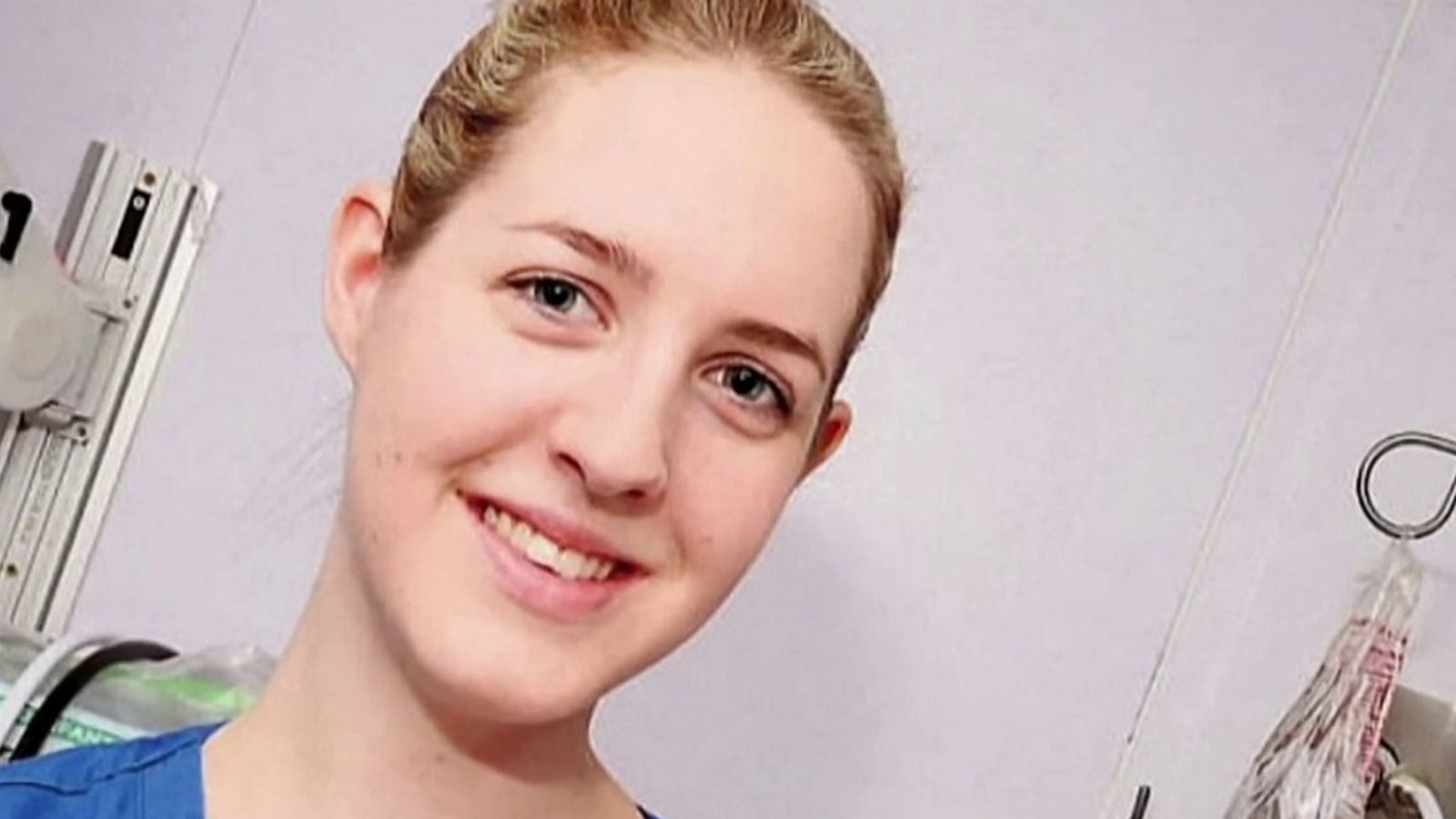“Extraordinary bleeding” in a baby boy allegedly murdered by nurse Lucy Letby could have been caused by a rigid wire or tube, a court has heard.
The infant, referred to as Child E, lost a quarter of his blood volume before he collapsed and died in the Countess of Chester Hospital’s neo-natal unit, jurors at Manchester Crown Court heard.
The blood loss took place during the night shift on 3 August 2015 when Letby was the designated nurse for the premature-born twin boy.
Prosecutors say Letby, 32, injected a fatal amount of air into the youngster’s bloodstream.
Giving evidence today, expert medical witness Dr Dewi Evans said he thought Child E suffered a fatal air embolism – a blockage of the blood supply – after a treating medic noticed “unusual” purple patches on the boy’s abdomen.
He said a second “major” issue was “significant haemorrhaging from the upper gastrointestinal tract, somewhere between the mouth and the stomach”.
Dr Evans said: “I think he (Child E) suffered trauma from some other form of injury and there were a number of bits of equipment on a neo-natal unit that are relatively rigid.
Lucy Letby trial: Nurse bathed body of one of her victims in front of child’s mother, murder trial hears
Lucy Letby trial: Nurse ‘told off’ colleague for shouting for help when baby’s oxygen levels dropped
Lucy Letby trial: Experienced nurse ‘struck’ by ‘unusual’ rash on allegedly murdered baby
“Plastic tubes used for suction for interference, so it could have been interference with that.”
Another medical instrument known as an introducer – a thin wire surrounded by plastic which can be used to intubate a baby – would be “more than sufficient to cause trauma if used inappropriately,” he added.
Dr Evans said: “I cannot be 100% certain what caused the trauma to the gastrointestinal system but it had to be some kind of relatively stiff (equipment) which was sufficient to cause this extraordinary bleeding.”
‘No innocent explanation’
Prosecutor Nick Johnson KC asked the consultant paediatrician if there could be an “innocent explanation” for the level of bleeding.
“No,” Dr Evans replied. “The other explanation for this is a bleeding ulcer. I have never seen a bleeding ulcer cause this sort of presentation.”
Dr Evans said he was “at a loss” to explain the haemorrhaging in his initial reports and it was not possible to say if any deliberate harm took place because of a lack of post-mortem exam.
In a further report, which came after he reviewed a statement from Child E’s mother who described “horrendous crying” from her son and blood around his mouth – he suggested something “had been done or used” to cause trauma.
Dr Evans suggested a nasogastric tube could have been thrust into the baby’s stomach with inappropriate force, but told the court he later saw the type of tube used by the hospital at the time and ruled out that it could be capable of causing such damage.
Letby denies the murders of seven babies and the attempted murders of 10 others between June 2015 and June 2016.
The trial continues.








